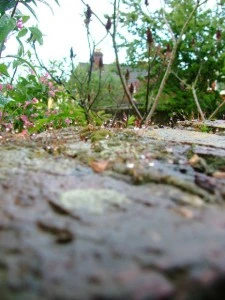 Patio furniture isn’t the only thing getting soggy this summer; with the excess of rainfall, plants have been getting more hydration than they can handle. While many plants are greedy drinkers, too much water can lead to insufficient oxygen and fungal growth in the roots
Patio furniture isn’t the only thing getting soggy this summer; with the excess of rainfall, plants have been getting more hydration than they can handle. While many plants are greedy drinkers, too much water can lead to insufficient oxygen and fungal growth in the roots
Recognizing root rot starts above the surface. Yellow, withering leaves is one of the first signs that something’s not right in your garden. Other signs include browning stems and visible mold on your foliage. Stagnate water pooling around your plants is another indicator, and nearly unavoidable these last few months. But once you’ve recognized the problem, what to do about it?
While plants with root rot are difficult to rescue, the task is not impossible. The first step is to manage the flow of water. You can’t stop the rain, but you can control it. Digging runoff streams will direct pools away from your plants and make managing hydration simpler. You can also cover problem plants during expected storms to prevent them from getting flooded. Irrigation monitoring systems are helpful ways of knowing just how much water your plants are getting so you can combat or supplement the Georgia weather as needed.
Once you’ve controlled the source of the problem, it’s necessary to examine the environment of your plants. Is your plant getting nutrients? Cleaning the diseased roots is difficult in mature plants, but making sure they have the strength to fight goes a long way to facing root rot. Is the topsoil staying too wet? Remove a portion of the soil, taking care to leave the roots covered. Then ask a professional about mulching techniques that encourage drainage.
As we approach the early fall months, the rainfall may wane. Consider implementing irrigation techniques now to prevent garden disease in the years to come. Root rot goes deep and is difficult to fight, but with a little help from its gardener your plant can develop the necessary resilience to make it through another year.
If you have questions about root rot, don’t hesitate to contact us. Check out our Facebook, Twitter, and Pinterest for daily gardening tips, tricks, and photos.



Comments (0)
Thanks for your comment!
Thanks for your feedback! Your comments have been successfully submitted! Please note, all comments require admin approval prior to display.
Error submitting comment!
There is a problem with your comment, please see below and try again.